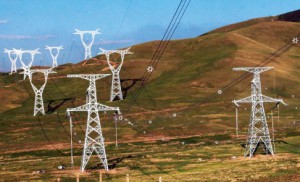In the end of July 2015, the National Energy Administration of China released the 2015-2020 Power Grid construction and reform plan. The document describes the grid development and upgrade plans for the next 5 years.

Guest author Simon Goess – Blog Global Sustainability
In the end of July 2015, the National Energy Administration of China released the 2015-2020 Power Grid construction and reform plan. The document describes the grid development and upgrade plans for the next 5 years. A cumulative investment of more than 2 trillion Yuan (€280 billion) is therefore planned to be spent in order to increase the length of the transmissions lines in the ultra-high voltage (more than 800 kV) and medium voltage area by 40 % and 30 %, respectively. The high-voltage network should reach a length of 1.01 million km, whereas the medium voltage network is poised to grow to 4.04 million km by 2020. In comparison the German high-voltage grid has a length of roughly 35000 km, whereas the entire electricity network of Germany, including low-voltage “only” reaches a length of 1.8 million km according to German Bundesnetzagentur.
One example is the Tian-Zhong 800 kV UHVDC power line from the city of Hami in the north-western Xinjiang province to the city of Zhengzhou in Henan province with a length of almost 2200 km. It was put in operation in January 2014 and by August 2015 reached a cumulative transmission of 30 TWh. More than 10 % of the transmitted electricity was generated by wind and PV. The line has a maximum transmission capacity of 5 GW and allows for the transmission of 100 GWh per day (BJX).
Almost ten large scale power grid transmission projects are currently under construction, including an 800 kV UHVDC power line from Jiuquan city in north-western Gansu province to Hunan province in the south-east of China. This line is supposed to be completed in 2017 and will have a length of 2370 km with a capacity of 8 GW. The costs of the project are estimated to amount to 26.2 billion Yuan (€3.65 billion) (Global Transmission).



